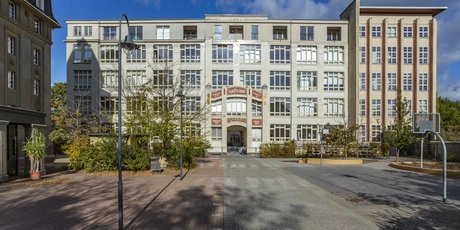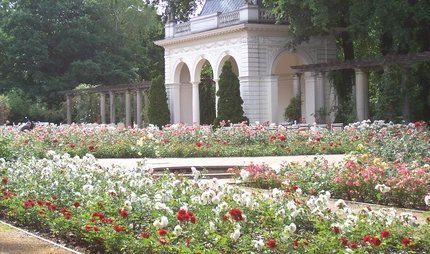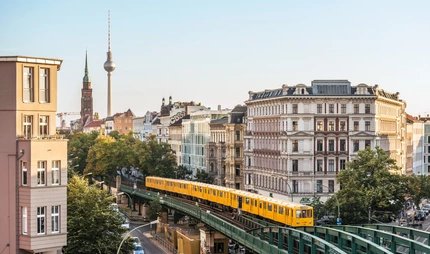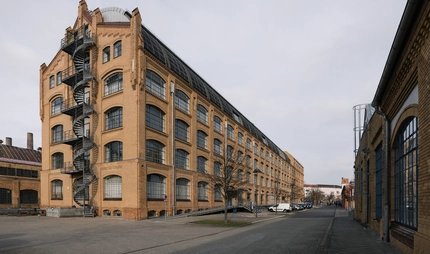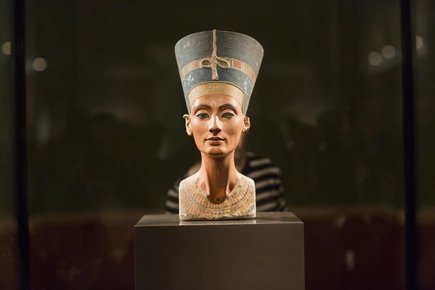
Garbáty Cigarette Factory
Hand-rolled from Pankow
The Königin von Saba from Pankow: 120 years ago Josef Garbáty produced this cigarette brand under state-of-the-art conditions.
Around the turn of the century, Berlin was the centre of the German cigarette industry. In 1881 Josef Garbáty-Rosenthal, son of the Jewish immigrant Max Rosenthal, founded his cigarette company on Linienstraße in Berlin-Mitte. He and his wife Rosa Rahel Rosenthal were the first in Berlin to produce ‘Egyptian style’ cigarettes, the equivalent of our modern-day cigarettes.
Garbáty’s cigarette brands Königin von Saba, Garbáty Kalif and Kurmark were so successful that the company soon outgrew the business premises. Both sales and employee numbers grew rapidly. Garbáty’s cigarettes were not only extremely popular in the German colonies, Asia and America, but also with the Italian state government.
Garbáty relocated and expanded the production plant on Schönhauser Allee several times between 1890 and 1900. From 1906 he had factories built on an undeveloped site in Pankow, which was still an independent town at that time. These premises were located on Hadlichstraße and Berliner Straße and connected to the capital by tram.

Between Historicism and Modernism
The Pankow architect Paul Ueberholz erected a building with a U-shaped floor plan on the site facing Hadlichstraße. The Neoclassical entrance building has a light-coloured façade, while the main building at the rear is made of reddish-brown bricks and boasts Art Nouveau decorative elements.
Seven years later, in 1913, Ueberholz built another factory facing Berliner Straße, creating an almost square inner courtyard. The architect covered the street-facing side with a monumental façade.
The factory was state-of-the-art in terms of cigarette production and the working conditions were also excellent, as the Tabakwirtschaftliche Rundschau of 20 February 1921 reported: “In terms of order, cleanliness, hygiene facilities, worker protection features and other operational facilities, the entire operation has been designed in a generous and exemplary manner.”
Specifically, this meant a company canteen on the top floor, numerous cloakrooms and break rooms, and an entire bathhouse with several bathtubs and shower rooms in the southern gable of the main building. The rear building housed the company’s own library, and there was also a company choir, a company newspaper and from 1931 the Garbáty Sports Club.
After the handover of the factory to sons Eugen and Moritz in 1929, the Hamburg master builder Fritz Höger built a five-storey extension on the eastern side in 1930/31. This connected to the back of the old building along its entire length. Although regarded as one of the most important representatives of North German Brick Expressionism, Höger designed the 56-metre-long and nine-metre-deep warehouse building in a “modernity and constructive objectivity that you rarely encounter with him”.
In contrast to the previous brick building, Höger erected a steel skeleton structure. The columns stood vertically in front of the actual outer wall, which the architect emphasised not only through the distance to the projecting flat roof, but also through clinker bricks, which clearly lift the pillars off the wall. In order to create visual proximity to the old building with its light-coloured façade, he also clad the façade of the new building with light-coloured, matt-glazed clinker bricks.
Forced Sale and Emigration
In 1938 the Jewish Garbáty family had to agree to the forced sale to the Jacob Koerfer Group from Cologne. The sons first emigrated to France before fleeing to the USA in 1939. Josef Garbáty Rosenthal died in June 1939 and was buried at the Jewish cemetery in Weißensee.
During the Second World War, the factory escaped the worst of the damage, but was gutted by fire on 1 May 1945 as a result of looting. The production of the famous cigarette brand Saba continued on the premises in the GDR. However, after German reunification a last attempt to produce cigarettes in Pankow failed in 1995 and the factory closed for good.
The site remained unused until 2010. Today, after structural restoration in 2011/12, it offers upscale residential apartments in the historic listed building.
Our tips for nearby the Garbáty cigarette factory
You can find even more Berlin Modernist buildings in the nearby Niederschönhausen Housing Estate on Grabbeallee. It was constructed in 1908/09 according to plans by the architect Paul Mebes and is a fine example of early modernisation in Berlin housing development. Take the M1 tram from Pankow S- and U-Bahn station to the Bürgerpark Pankow stop.
Practical information from visitBerlin
The Garbáty cigarette factory can be reached by S-Bahn lines 1, 2, 8 or 85 and U-Bahn line 2 to the Pankow station. To explore the city, we recommend the Berlin WelcomeCard for public transport.
